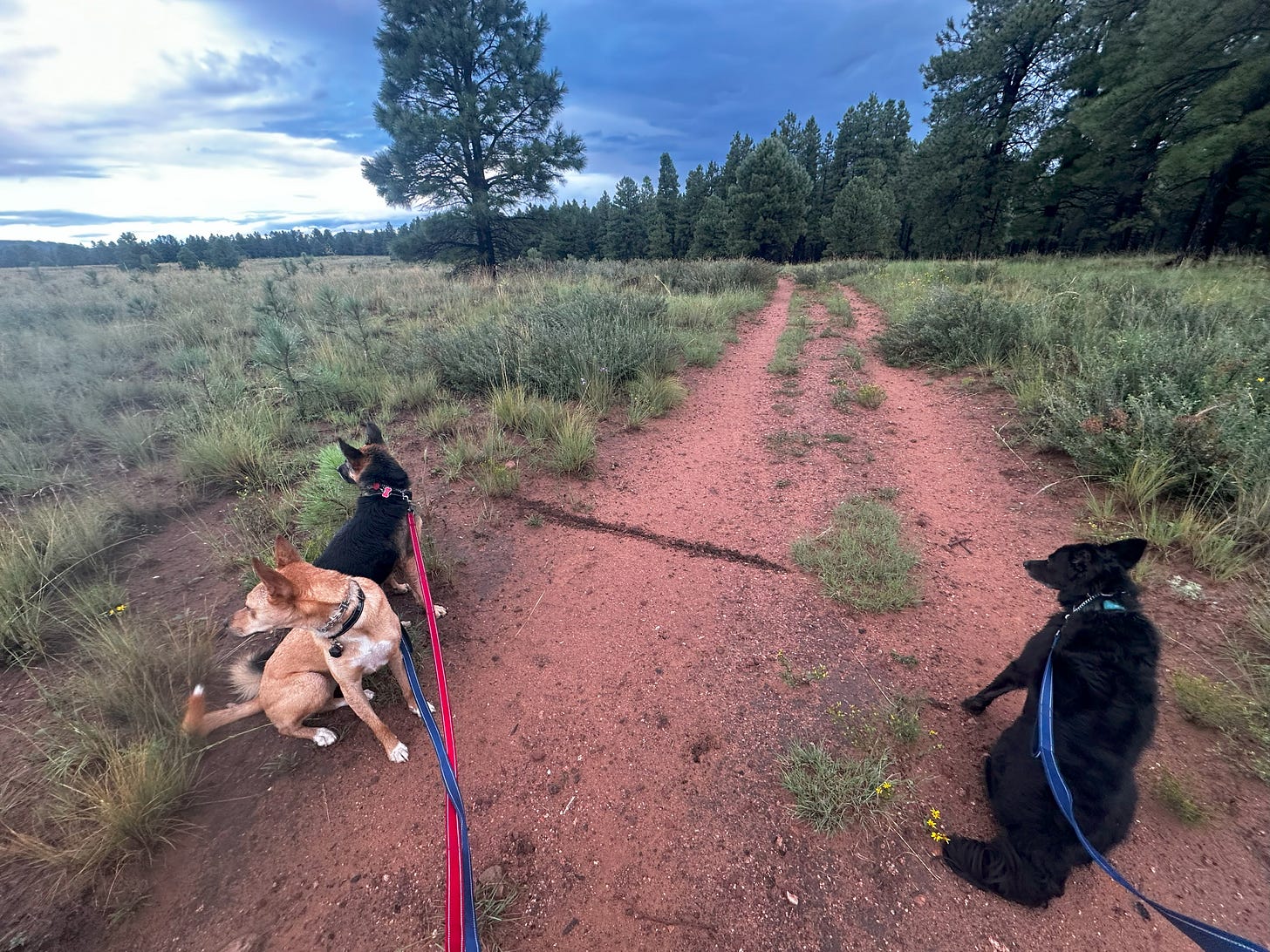Welcome to another episode of UnRambling, where I record my thoughts while biking, hiking, running, driving, or walking—okay, maybe not swimming. I then transcribe and unravel them, capturing the rich ideas often left on the road.
Today is Friday, February 7, 2025, and I am walking with my three dogs in the forest behind my house.

The Reverse UnRambling Process
For a long time, my UnRambling process has followed the same structure. I take an idea, let it develop over a long, freeform recording while I’m out in nature, transcribe it, and then sift through the thoughts to find the most compelling themes. From there, I distill those themes into a structured article, tightening it into a 1,500-word piece on Personal Life Record and eventually an even punchier, Seth Godin-style article for Medium. The final step is a video between the short article and the long-form piece—a concise but compelling visual exploration of the topic.
But today, as I was writing, I found myself thinking about an earlier idea I had. Since I had already processed the concept multiple times, even proposing a TED Talk about it, I was able to create a short, compelling article in one go. That got me thinking: What if I reversed my usual process?
Starting Small and Expanding
Instead of starting with a long-form UnRambling session and narrowing it down, what if I started with a short, punchy article between 400 and 600 words? It's something I could quickly post on Medium. From there, I could expand on the idea by adding personal stories, breaking them into bullet-point steps, or tying them to my larger framework—the Personal Life Record and life indexing.
Once that expansion is complete, I could take the refined idea for a walk—literally. I could bring it into an UnRambling session to see where the thought leads next. The outdoor environment, the rhythm of movement, and the freedom of speaking without immediate constraints could open up new angles and insights that might not emerge in the writing phase.
The Power of Movement and Nature
Something about being outside, about walking with my dogs or running through the hills, seems to unlock a different kind of thinking. Ideas crystallize, problems solve themselves, and concepts that feel stuck in my head suddenly take on new life. I can’t count the number of times I’ve been on a bike ride or a run when I’ve thought, This is it. This is the perfect way to phrase this idea. I’ll never forget it.
And then, just like waking from a dream with the perfect thought in mind, hours later, I’m left with only fragments—if that. It’s frustrating. But it’s also a reminder of why UnRambling exists in the first place. Capturing these insights as they happen gives them a permanence that memory alone can’t guarantee.
The Value of Capturing Thoughts
I’m not a trained psychologist, and I don’t even play one on TV, but I have to believe that this exercise has more than just therapeutic value. There’s something inherently powerful about capturing and articulating thoughts, turning them from fleeting moments into tangible reflections.
Maybe there’s inherent value in thinking itself, even if the thought is fleeting. But I believe that being able to capture these moments—through words, through UnRambling—exponentially increases their value. Having the ability to revisit an idea months or even years later, with all the richness and context of the moment intact, is game-changing.
That’s what makes this process so powerful. Instead of disappearing into the ether, these thoughts become part of a larger, evolving body of work. They provide a way to track the arc of my thinking, to see the polished final product and the journey it took to get there.
A Framework for Meaning
As I wrap up this Reverse UnRambling session, I reflect on where I started—a short, concise article I was working on—and where I ended, exploring a new workflow for developing and deepening ideas. This isn’t just about a different way of structuring content. It’s about how we think, process, and capture the meaning behind the moments we experience.
I don’t fully understand all the implications of running these clips through AI first to transcribe them and then parse them into a cohesive narrative. The benefits, though, feel mind-blowing. They’re game-changing. And I know that doing this the old analog way—trying to capture every thought manually—would be impossible. This technology enables me to capture and refine ideas in ways I never could before.
At the same time, I’m not just doing this for myself. Trying to solve this for me, to create a system that helps me process and capture the meaning behind life’s moments, will hopefully help others do the same. If I can develop a framework that allows people to capture images and the meaning behind them, then this entire process will have been worth it.
This is about finding ways to capture the moments that matter—not just in pixels but in posts—words, ideas, and the stories we tell about our lives.


